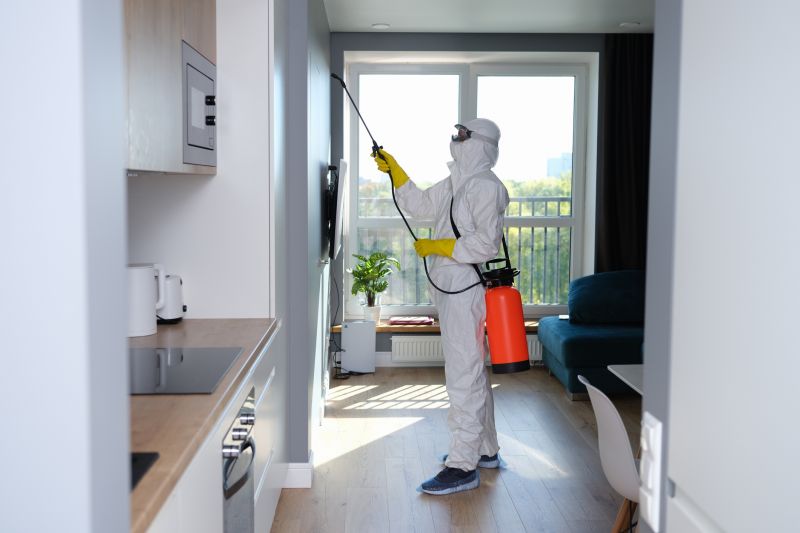Ultimate Collection of Mold Service Products for Contractors
Find high-performance solutions tailored for mold remediation projects that demand precision and durability.
 Mold remediation is a critical process for maintaining a healthy indoor environment, especially in areas prone to moisture and humidity. Effective mold service products encompass a wide range of tools and solutions designed to identify, eliminate, and prevent mold growth. These products are essential for homeowners, landlords, and professionals aiming to address mold issues safely and efficiently. From cleaning agents to moisture meters, the variety of available products allows users to tailor their approach based on the severity of the mold problem and the specific conditions of their space.
Mold remediation is a critical process for maintaining a healthy indoor environment, especially in areas prone to moisture and humidity. Effective mold service products encompass a wide range of tools and solutions designed to identify, eliminate, and prevent mold growth. These products are essential for homeowners, landlords, and professionals aiming to address mold issues safely and efficiently. From cleaning agents to moisture meters, the variety of available products allows users to tailor their approach based on the severity of the mold problem and the specific conditions of their space.
Top Overall Option
Comprehensive Mold Remediation Kit
A versatile mold remediation kit typically includes a combination of cleaning solutions, protective gear, and detection tools. Such kits provide a well-rounded approach for addressing mold issues in various environments, making them suitable for both DIY homeowners and professionals. They often contain detailed instructions to ensure safe and effective use, covering surface cleaning, air purification, and moisture control. While not guaranteeing complete eradication, these kits serve as a comprehensive starting point for tackling mold problems effectively.
Types of Products For Mold Service
Mold Testing Kits
Tools designed to detect mold presence and identify specific types or spores, aiding in accurate assessment.
Moisture Meters
Devices used to measure moisture levels in walls, floors, and other surfaces to prevent mold growth.
Mold Cleaning Solutions
Specialized cleaners formulated to remove mold from various surfaces safely and effectively.
Biocides and Mold Inhibitors
Chemical agents designed to kill mold spores and inhibit future growth on treated surfaces.
Scrubbing Brushes and Sponges
Tools to physically remove mold from surfaces during cleaning processes.
Air Purifiers with HEPA Filters
Devices that filter airborne mold spores, improving indoor air quality.
Dehumidifiers
Appliances that reduce indoor humidity, creating less favorable conditions for mold development.
Protective Gear
Masks, gloves, and suits to ensure safety during mold removal activities.
Ventilation Fans
Tools to enhance air circulation and reduce moisture accumulation in problem areas.
Mold-Resistant Paints
Coatings formulated to resist mold growth on painted surfaces.
Sealants and Barriers
Materials used to contain mold spores and prevent their spread during remediation.
Cleaning Wipes and Cloths
Convenient options for quick surface cleaning to remove mold residues.
UV Light Mold Killers
Devices utilizing ultraviolet light to eliminate mold spores on surfaces.
Humidity Monitors
Tools to continuously track indoor humidity levels and prevent mold-friendly conditions.
Mold Removal Foams
Foam-based solutions that penetrate porous surfaces to eliminate embedded mold.
Popular Choices
Widely used for initial detection of mold presence in residential and commercial spaces.
Popular for pinpointing areas with high moisture levels that could foster mold growth.
Commonly selected for their effectiveness in cleaning mold from surfaces like walls and ceilings.
Favored for improving indoor air quality by capturing airborne mold spores.
Essential for controlling humidity and preventing mold proliferation in damp environments.
Standard safety gear for safe handling during mold remediation activities.
Increasingly popular for their chemical-free approach to mold spore elimination.
Chosen for their role in long-term prevention of mold on painted surfaces.
Effective in containing mold spores during remediation projects.
Convenient for quick surface cleaning and mold residue removal.
Popular for improving airflow and reducing indoor moisture levels.
Commonly used to treat surfaces post-cleaning to inhibit mold regrowth.
Proper mold management begins with accurate detection. Mold testing kits and moisture meters help identify hidden or developing mold colonies that are not immediately visible. Once detected, cleaning and remediation products such as specialized cleaners, scrubbers, and biocides can be employed to remove mold from surfaces. In addition, dehumidifiers and ventilation systems are crucial for controlling indoor humidity levels, thus preventing future mold growth. Investing in quality products for mold service ensures a comprehensive approach that addresses both existing issues and future prevention.
Safety is paramount during mold remediation. Protective gear like masks, gloves, and suits helps prevent the inhalation of mold spores and contact with contaminated surfaces. For thorough cleaning, products that are designed to break down mold spores and inhibit regrowth are highly recommended. Regular maintenance and monitoring, aided by the right tools, can help sustain a mold-free environment over time. Whether dealing with minor outbreaks or more extensive infestations, selecting the appropriate products is key to effective and safe mold management.
Key Buying Considerations
- Identify the extent and type of mold problem to select appropriate products.
- Ensure compatibility of cleaning solutions with the surfaces being treated.
- Prioritize safety gear to prevent exposure during mold removal.
- Choose moisture detection tools to accurately assess problem areas.
- Opt for products with clear instructions for safe and effective use.
- Consider the size of the space to determine the capacity of dehumidifiers and air purifiers needed.
- Look for mold-resistant coatings if long-term prevention is a priority.
- Evaluate the ease of use and maintenance requirements of equipment.
- Check for product certifications or safety standards to ensure reliability.
- Assess the level of ventilation or airflow needed to support remediation efforts.
- Determine if chemical biocides are suitable or if alternative methods are preferred.
- Review product reviews and ratings for insights into real-world effectiveness.
- Consider budget constraints while balancing quality and coverage.
- Plan for ongoing monitoring to prevent future mold growth after initial remediation.
- Verify that cleaning products are suitable for the specific surfaces involved.
